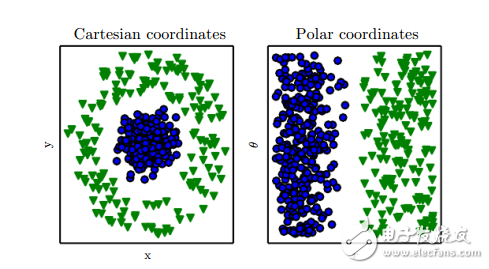資料介紹
Inventors have long dreamed of creating machines that think. This desire dates back to at least the time of ancient Greece. The mythical figures Pygmalion, Daedalus, and Hephaestus may all be interpreted as legendary inventors, and Galatea, Talos, and Pandora may all be regarded as artificial life (Ovid and Martin, 2004; Sparkes, 1996; Tandy, 1997)。 When programmable computers were first conceived, people wondered whether such machines might become intelligent, over a hundred years before one was built (Lovelace, 1842)。 Today, artificial intelligence (AI) is a thriving field with many practical applications and active research topics. We look to intelligent software to automate routine labor, understand speech or images, make diagnoses in medicine and support basic scientific research. In the early days of artificial intelligence, the field rapidly tackled and solved problems that are intellectually difficult for human beings but relatively straightforward for computers—problems that can be described by a list of formal, math- ematical rules. The true challenge to artificial intelligence proved to be solving the tasks that are easy for people to perform but hard for people to describe formally—problems that we solve intuitively, that feel automatic, like recognizing spoken words or faces in images. This book is about a solution to these more intuitive problems. This solution is to allow computers to learn from experience and understand the world in terms of a hierarchy of concepts, with each concept defined in terms of its relation to simpler concepts. By gathering knowledge from experience, this approach avoids the need for human operators to formally specify all of the knowledge that the computer needs. The hierarchy of concepts allows the computer to learn complicated concepts by building them out of simpler ones. If we draw a graph showing how theseconcepts are built on top of each other, the graph is deep, with many layers. For this reason, we call this approach to AI deep learning.

- 《平板顯示技術書籍》應根裕主編 0次下載
- 8051單片機C51編程電子版書籍 0次下載
- Learning MATLAB英文版電子資料下載 0次下載
- 基于雙估計器的Speedy Q-learning算法 2次下載
- uCOS-III中文版及英文版書籍下載 0次下載
- 冰點還原精靈(Deep Freeze) DFS7.2官方原版+注冊碼 0次下載
- 《智能儀器設計實驗指導書》電子書籍.pdf 0次下載
- 學習射頻必須要讀的書籍推薦 49次下載
- [android.開發書籍].OReilly.-.Learnin 1次下載
- uCOS-ii中文書 0次下載
- ucos-ii中文書籍 6次下載
- Xilinx_ISE9.1使用全流程中文書 0次下載
- 基于deep_learning的語音識別 22次下載
- Deep Web數據源自動分類
- LabVIEW for Everyone(經典英文書籍)
- 人工智能、機器學習和深度學習是什么 644次閱讀
- 怎樣使用Bevy和dfdx解決經典的Cart Pole問題呢 585次閱讀
- 如何使用Excel和TF實現Transformer詳細步驟說明 3830次閱讀
- Linux學習書籍推薦Linux就該這么學 4721次閱讀
- 為 Learning-to-Rank 打造的可擴展 TensorFlow 庫 4044次閱讀
- 通過深度學習方法為黑白老照片自動上色,帶我們重新憶起那段老時光! 1.3w次閱讀
- Q Learning算法學習 3574次閱讀
- 兼具動態規劃DP和蒙特卡洛MC優點的TD Learning算法 3379次閱讀
- 關于TD Learning算法的分析 1829次閱讀
- 機器學習算法與Python學習簡單的編碼規范 3615次閱讀
- 模擬電路書籍推薦排行榜 4w次閱讀
- 軟件測試書籍有哪些_軟件測試書籍推薦 1.5w次閱讀
- c語言入門書籍推薦 4.6w次閱讀
- java入門經典書籍推薦 1.9w次閱讀
- Z1上搭建二值神經網絡(BNN) 3959次閱讀
下載排行
本周
- 1電子電路原理第七版PDF電子教材免費下載
- 0.00 MB | 1490次下載 | 免費
- 2單片機典型實例介紹
- 18.19 MB | 92次下載 | 1 積分
- 3S7-200PLC編程實例詳細資料
- 1.17 MB | 27次下載 | 1 積分
- 4筆記本電腦主板的元件識別和講解說明
- 4.28 MB | 18次下載 | 4 積分
- 5開關電源原理及各功能電路詳解
- 0.38 MB | 10次下載 | 免費
- 6基于AT89C2051/4051單片機編程器的實驗
- 0.11 MB | 4次下載 | 免費
- 7藍牙設備在嵌入式領域的廣泛應用
- 0.63 MB | 3次下載 | 免費
- 89天練會電子電路識圖
- 5.91 MB | 3次下載 | 免費
本月
- 1OrCAD10.5下載OrCAD10.5中文版軟件
- 0.00 MB | 234313次下載 | 免費
- 2PADS 9.0 2009最新版 -下載
- 0.00 MB | 66304次下載 | 免費
- 3protel99下載protel99軟件下載(中文版)
- 0.00 MB | 51209次下載 | 免費
- 4LabView 8.0 專業版下載 (3CD完整版)
- 0.00 MB | 51043次下載 | 免費
- 5555集成電路應用800例(新編版)
- 0.00 MB | 33562次下載 | 免費
- 6接口電路圖大全
- 未知 | 30320次下載 | 免費
- 7Multisim 10下載Multisim 10 中文版
- 0.00 MB | 28588次下載 | 免費
- 8開關電源設計實例指南
- 未知 | 21539次下載 | 免費
總榜
- 1matlab軟件下載入口
- 未知 | 935053次下載 | 免費
- 2protel99se軟件下載(可英文版轉中文版)
- 78.1 MB | 537791次下載 | 免費
- 3MATLAB 7.1 下載 (含軟件介紹)
- 未知 | 420026次下載 | 免費
- 4OrCAD10.5下載OrCAD10.5中文版軟件
- 0.00 MB | 234313次下載 | 免費
- 5Altium DXP2002下載入口
- 未知 | 233045次下載 | 免費
- 6電路仿真軟件multisim 10.0免費下載
- 340992 | 191183次下載 | 免費
- 7十天學會AVR單片機與C語言視頻教程 下載
- 158M | 183277次下載 | 免費
- 8proe5.0野火版下載(中文版免費下載)
- 未知 | 138039次下載 | 免費
 電子發燒友App
電子發燒友App

















 創作
創作 發文章
發文章 發帖
發帖  提問
提問  發資料
發資料 發視頻
發視頻 上傳資料賺積分
上傳資料賺積分









評論